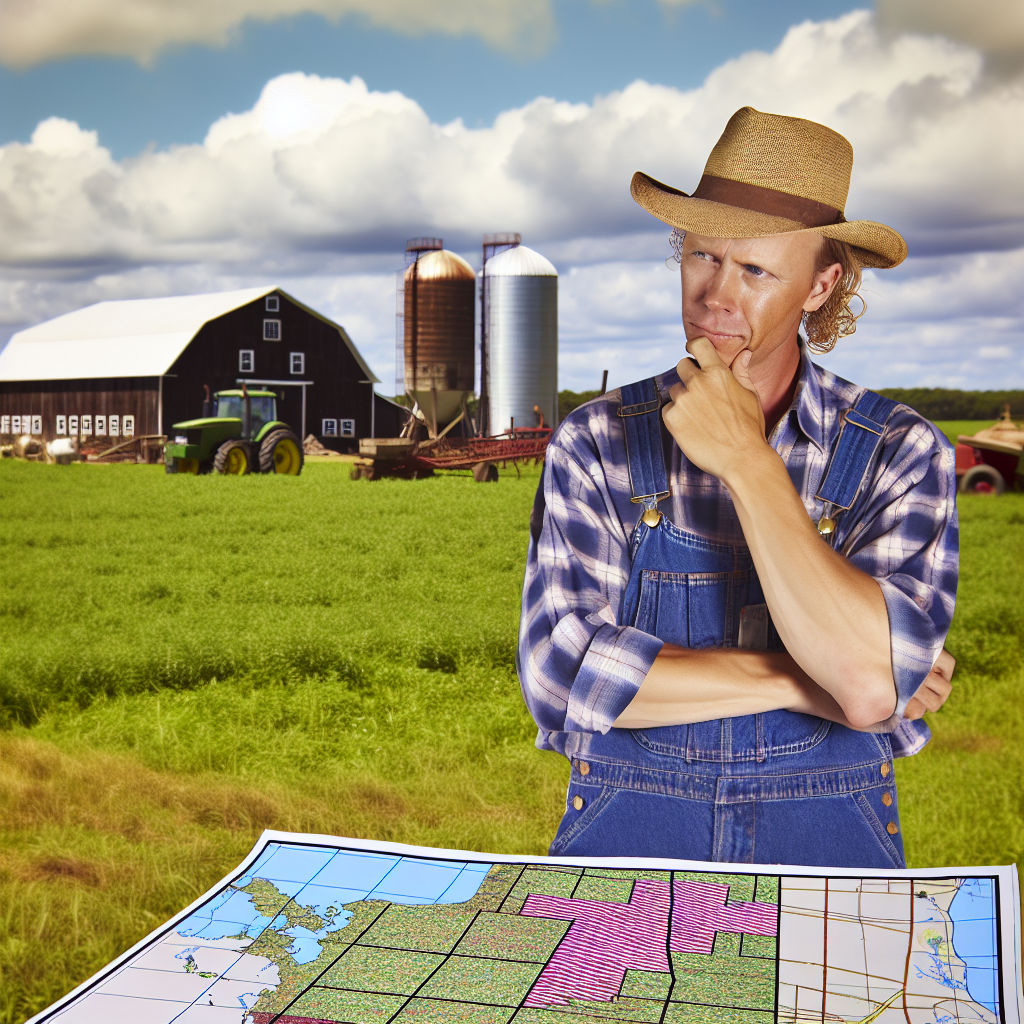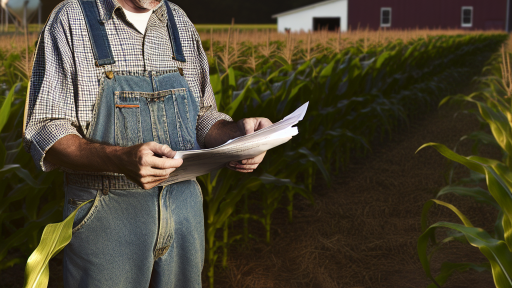Understanding Local Zoning Laws and Regulations for Agricultural Use
Defining Agricultural Zones
Local zoning laws often classify land by its intended use.
Agricultural zones typically allow farming activities and structures.
Understanding these definitions is vital for successful farm expansion.
Researching Local Regulations
Start by contacting your local zoning office.
They can provide specific zoning maps and guidelines.
Additionally, research any recent changes in local regulations.
Attending local government meetings can also be beneficial.
Permits and Applications
Farm expansions usually require various permits.
These may include building permits, land use permits, and environmental assessments.
Ensure you submit all applications accurately and on time.
Keep documentation of all correspondence with officials.
Compliance with Environmental Regulations
Pay attention to environmental regulations affecting agricultural activities.
Consider factors like water usage and waste management practices.
Compliance ensures the sustainability of your farm expansion plans.
Consulting with Professionals
Consulting with a land use attorney is often wise.
Transform Your Agribusiness
Unlock your farm's potential with expert advice tailored to your needs. Get actionable steps that drive real results.
Get StartedThey can help navigate complex zoning laws and regulations.
Additionally, hiring a land planner can optimize the design of your farm layout.
Community Involvement
Engaging with the local community can foster positive relationships.
Attend community meetings and express your intentions clearly.
Building consensus around your expansion plans can prove invaluable.
Staying Informed on Changes
Zoning laws and regulations frequently change.
Regularly check for updates from your local planning department.
Staying informed helps avoid potential legal issues in the future.
Assessing Land Suitability for Different Types of Farming Operations
Understanding Land Characteristics
Land characteristics significantly influence farming success.
Soil type plays a critical role in what crops can thrive.
For instance, sandy soils drain well but often lack nutrients.
Conversely, clay soils retain moisture but may drain poorly.
Conducting a soil test helps determine nutrient levels and pH.
This information guides decisions on amendments needed for planting.
Climate Considerations
Climate is a major factor in agricultural viability.
Each crop requires specific temperature ranges to grow optimally.
Understanding local climate patterns helps farmers choose suitable crops.
Additionally, rainfall amounts influence irrigation needs.
Farmers must assess their region’s frost dates to avoid losses.
Topography and Drainage
Topography affects both farming practices and crop choices.
Flat lands are generally easier for planting and harvesting.
On hilly terrain, erosion can be a significant concern.
30% slopes may limit machinery access and increase erosion risks.
Good drainage systems protect crops from waterlogging.
Showcase Your Farming Business
Publish your professional farming services profile on our blog for a one-time fee of $200 and reach a dedicated audience of farmers and agribusiness owners.
Publish Your ProfileAccessibility and Proximity to Markets
Accessibility to transportation networks is essential.
Close proximity to markets reduces transportation costs.
Farmers should analyze the distance to storage and distribution centers.
Additionally, road condition affects how quickly products can reach consumers.
Zoning Regulations and Restrictions
Zoning laws can dictate what types of farming are permissible.
Before expanding operations, review local zoning requirements.
Some areas may restrict livestock farming or certain crop types.
Understanding these laws can prevent costly legal issues.
Environmental Impact Assessments
Conducting environmental assessments is often necessary.
These evaluations help identify potential ecological impacts of farming.
Creating buffers around sensitive areas protects natural habitats.
Farmers should also consider water usage and conservation efforts.
Long-Term Planning and Sustainability
Long-term planning ensures farm sustainability and productivity.
Farming practices should adapt to changing environmental conditions.
Implementing crop rotation can improve soil health over time.
Also, consider integrating technology for precision agriculture.
This approach maximizes yields while minimizing resource use.
Evaluating the Impact of Zoning on Environmental and Neighbor Relations
Zoning Regulations and Environmental Considerations
Zoning regulations greatly influence environmental practices on farms.
These rules stipulate land use and determine permissible farming activities.
Proper adherence can lead to sustainable practices that benefit the ecosystem.
For instance, zoning can protect wetlands from agricultural runoff.
This ensures vital habitats remain intact for local wildlife.
Moreover, farmers should understand local zoning laws to minimize environmental harm.
Building Relationships with Neighbors
Positive neighbor relations are essential for farm expansion.
Open communication allows for addressing concerns before they escalate.
Farmers can foster goodwill by informing neighbors about expansion plans.
Furthermore, consider organizing community meetings to discuss changes.
Engagement can lead to valuable feedback and local support.
Addressing Concerns
Neighbors may worry about the impact of expansion on their properties.
Potential issues could involve noise, traffic, or odors from operations.
By addressing these concerns proactively, farmers can alleviate fears.
Offering solutions, such as noise barriers or buffer zones, can be beneficial.
The Role of Environmental Assessments
Conducting environmental assessments is critical for successful expansion.
These assessments evaluate the potential impact of proposed activities.
They ensure compliance with local and federal regulations.
Furthermore, environmental assessments can highlight areas for improvement.
Implementing recommended changes can enhance sustainability on the farm.
Involving the Community
Incorporate community feedback into the assessment process.
This practice fosters transparency and helps build trust with residents.
Additionally, being proactive about environmental stewardship can create goodwill.
Showcase Your Farming Business
Publish your professional farming services profile on our blog for a one-time fee of $200 and reach a dedicated audience of farmers and agribusiness owners.
Publish Your ProfileFarmers who prioritize environmental issues typically gain local support.
Future Directions for Zoning and Environmental Management
Understanding zoning laws is key to minimizing conflicts with neighbors.
Environmental considerations are intertwined with zoning regulations.
A holistic approach can enhance farm operations and community relations.
Ultimately, successful expansion lies in collaboration and compliance.
See Related Content: Managing Farm Water Use Effectively and Legally
Navigating Permitting Processes for Farm Expansion Projects
Understand Local Zoning Laws
Research local zoning regulations before planning your expansion.
Each area has specific rules that can affect your project.
Consult with your local planning department for guidance.
They can provide information on permissible uses in your zone.
Determine Required Permits
Identify all necessary permits related to your expansion.
Common permits include land use and environmental permits.
Review permit applications carefully to ensure compliance.
This can streamline the approval process significantly.
Engage with Stakeholders
Communicate with neighbors and community members early on.
Share your plans to foster understanding and support.
Address concerns they may have regarding your expansion.
This proactive engagement can lead to smoother approvals.
Prepare Comprehensive Plans
Develop detailed expansion plans with clear objectives.
Include site plans, project timelines, and financial projections.
Comprehensive documentation enhances your permit application.
It shows local authorities you are serious about compliance.
Consult Professionals
Consider hiring professionals for expert guidance.
Architects and land planners can optimize your expansion layout.
Legal advisors help navigate regulatory requirements effectively.
These professionals add value to your project from the start.
Attend Public Hearings
Be prepared to present your project at public hearings.
These sessions allow community feedback that can influence decisions.
Practice your presentation to convey your plans clearly.
Be open to constructive criticism and willing to make adjustments.
Stay Informed about Changes
Regularly monitor any changes to local zoning laws.
Legislation can impact your expansion plans unexpectedly.
Join local agricultural organizations to stay updated.
Networking in these circles often provides helpful insights.
Find Out More: Sustainable Farming Practices Under New Laws
The Role of Agricultural Districts in Supporting Farm Growth
Defining Agricultural Districts
Agricultural districts are specially designated areas.
They support farming activities and practices.
These districts help maintain agricultural land and resources.
Additionally, they aim to preserve local farming culture.
Benefits of Agricultural Districts
Agricultural districts offer various advantages to farmers.
Showcase Your Farming Business
Publish your professional farming services profile on our blog for a one-time fee of $200 and reach a dedicated audience of farmers and agribusiness owners.
Publish Your ProfileFirst, they provide access to government programs and funding.
These resources promote farm expansion and development.
Second, such districts enhance property value.
They create a favorable environment for agricultural operations.
Consequently, this results in long-term economic benefits for farmers.
Furthermore, agricultural districts offer protection from urban sprawl.
They prevent conversions of farmland to commercial or residential use.
Thus, farmers can focus on production without external pressures.
Impacts on Zoning Regulations
These districts influence local zoning regulations significantly.
They typically allow for more flexible land use.
This flexibility can include alternative farming practices and agritourism operations.
Moreover, agricultural districts often streamline permitting processes.
This makes it easier for farmers to undertake new projects.
As a result, these districts can accelerate farm growth and innovation.
Local Community Engagement
Agricultural districts promote community involvement in farming initiatives.
They encourage local residents to support local agriculture.
This creates a strong relationship between farmers and their communities.
Additionally, community events foster awareness of agricultural issues.
These programs help educate the public about local farming efforts.
Hence, districts can enhance the visibility of agricultural practices.
Case Studies of Successful Agricultural Districts
Several examples demonstrate effective agricultural districts.
For instance, the Sonoma County Agricultural Preservation and Open Space District has achieved significant success.
This district focuses on preserving farmland while allowing sustainable practices.
As a result, it attracts tourism while supporting local farmers.
Another notable example is the Mahoning County Agricultural District in Ohio.
This district promotes diverse agricultural activities.
It effectively showcases the importance of local farming in the region.
Find Out More: Zoning Compliance Tips for Modern Farmers

Analyzing Future Growth Areas and Urban Encroachment on Farmland
Identifying Growth Patterns
Farm expansion requires thorough analysis of future growth patterns.
Understanding local zoning laws is crucial for this process.
Consulting demographic studies can provide valuable insights.
These studies often reveal where populations are expected to grow.
Tools like GIS (Geographic Information Systems) can aid in mapping these trends.
Farmers should utilize this data to make informed decisions.
Assessing Urban Encroachment Risks
Urban encroachment poses significant challenges to farmland.
Farmers must assess the risk of urban sprawl in nearby areas.
Increased residential development can lead to land disputes.
Future zoning changes can impact farm operations directly.
Staying informed on local government plans is essential.
Engaging with local officials can help advocate for agricultural interests.
Showcase Your Farming Business
Publish your professional farming services profile on our blog for a one-time fee of $200 and reach a dedicated audience of farmers and agribusiness owners.
Publish Your ProfileBenefits of Strategic Planning
Effective planning can mitigate the impacts of urban growth.
Investing in sustainable practices enhances long-term viability.
Building relationships with urban planners fosters collaboration.
Such collaborations can lead to better zoning regulations.
Furthermore, strategic investments can bolster community support.
This support can deter unfavorable zoning changes.
Innovative Solutions for Farmland Preservation
Farmers can explore innovative solutions to combat encroachment.
Permanent conservation easements help protect farmland from development.
Additionally, creating agricultural districts can shield local farms.
Educating the public on farmland benefits encourages its preservation.
Awareness campaigns about sustainable agriculture can also help.
Networking with local organizations can amplify these efforts.
Monitoring Regulatory Changes
Regulatory landscapes frequently change in response to growth.
Farmers must continuously monitor local and state regulations.
Participating in community meetings keeps farmers informed.
Advocacy groups can provide crucial information on zoning issues.
Staying proactive allows farmers to adapt swiftly to changes.
This adaptability is essential for successful farm expansion.
Explore Further: Strategies for Exporting Farm Produce
Identifying Zoning Categories Relevant to Livestock vs. Crop Farming
Zoning Regulations Overview
Zoning regulations govern how land can be used in a particular area.
They are crucial for managing different types of agricultural activities.
Understanding these regulations helps farmers make informed decisions.
Livestock Farming Zoning Categories
Livestock farming typically requires specific zoning classifications.
These categories often focus on animal welfare and environmental impacts.
Common zoning types for livestock include agricultural and special use zones.
Agricultural zones allow for various farming activities, including livestock.
Special use zones permit specific operations, such as confined animal feeding.
Factors Affecting Livestock Zoning
Several factors influence livestock zoning requirements.
- Animal density limits are key considerations in zoning ordinances.
- Setback regulations determine how far animal structures must be from property lines.
- Noise and odor regulations often dictate operational limits.
Farmers must also consider local health codes and regulations.
Crop Farming Zoning Categories
Crop farming has its own set of zoning requirements and classifications.
Similar to livestock, these categories aim to protect land and ensure sustainability.
Typically, crop farming falls under general agricultural zones.
These areas usually prohibit heavy industrial activities that could damage crops.
Factors Affecting Crop Zoning
Crop zoning is affected by various agronomic factors.
- Soil quality is a significant consideration within zoning laws.
- Water availability and irrigation systems are often regulated.
- Crop rotation practices may also influence zoning decisions.
Farmers should review local guidelines regularly for updates.
Comparing Zoning Needs for Livestock and Crops
Understanding the differences in zoning categories is essential.
Livestock farming may face stricter regulations than crop farming.
This difference arises from potential environmental impact concerns.
Both types of farming must meet agricultural standards and local requirements.
Navigating Zoning Challenges
Farmers should be proactive in addressing zoning challenges.
Showcase Your Farming Business
Publish your professional farming services profile on our blog for a one-time fee of $200 and reach a dedicated audience of farmers and agribusiness owners.
Publish Your ProfileEngaging with local planning commissions can be beneficial.
Staying informed can help in avoiding violations and setbacks.
Consulting with zoning experts may also prove advantageous.
Strategies for Engaging with Local Authorities and Community Stakeholders
Building Relationships
Developing strong relationships is essential for farm expansion.
Engage with local authorities early in the planning process.
Attend community meetings to establish connections.
Moreover, involve community members in discussion groups.
Effective Communication
Communicate openly about your farm expansion plans.
Share project details to foster transparency and trust.
Utilize various communication platforms, such as social media.
For example, create a dedicated website or blog for updates.
Gathering Feedback
Seek feedback from community stakeholders regularly.
Host open forums or workshops to encourage input.
Implement suggestions where feasible to show responsiveness.
Furthermore, consider conducting surveys to assess community sentiment.
Collaborative Projects
Propose collaborative projects that benefit the community.
Partnerships can enhance relationships and support.
Think about educational programs related to agriculture.
Additionally, consider community events to increase awareness.
Addressing Concerns
Listen actively to any concerns from the community.
Address specific issues openly and honestly.
Provide factual information to alleviate fears.
Furthermore, maintain ongoing dialogue to build confidence.
Regulatory Compliance
Ensure compliance with zoning regulations and local laws.
Consult with local authorities to avoid misunderstandings.
Stay informed about any changes in regulations.
Moreover, keeping records can streamline the approval process.
Additional Resources
Aligning Food Systems Policies to Advance Public Health – PMC




